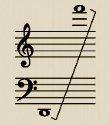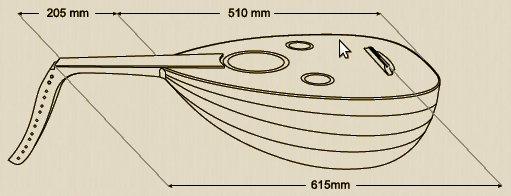In Persian/Iranian the word "bat" means duck, while "bar" is the duck's breast. Lute is one of the most ancient Iranian instruments. It is called "roud" by the Persians and Arabs call it "oud".

Some believe that lute has either come from Hairah to the west of the Euphrates river near Mada'en, the education center of the Sassanid princes, or from a city known as "Bab".
It has also been referred to by many other names including "oud", "mozhar", "motar" and "keran". Lute is considered to be of Persian origin and playing it has been quite common in Iran since the ancient times. Once the Iranian lute was taken to Saudi Arabia, the Arabs, likewise, started making it from wood and called it "oud".
Its bowl is very large and pear-shaped. It has an extremely short handle, so that the cords mainly extend along its bowl. It has 10 cords or five pairs of cord and is played with a plectrum. A chicken or peacock feather serves as plectrum. Lute produces a dull, soft and melancholy tone.
Oud Iranian Mohammadi bros
The main parts of this instrument are:
1.Body (walnut, rosewood, maple and …)
2.Neck and peg box (mostly made of walnut wood)
3.Soundboard ( red cedar and/or spruce)
4.Tuning pegs made of mostly rosewood or ebony or boxwood
5.Bridge made of rosewood or walnut or ebony
sound scale of 10 string Oud

Sound scale of 11 string Oud

Sound scale of 13 string Oud

The useable sound scale for the player is one whole octave.

Ordering options for Oud is very vast, but here are some major ones:
1. Standard Oud body which is made of walnut, maple, and/or rosewood.
2.Oud with half-ornated body (herringbone style)
3. Oud with fully-ornated body with inlays on the fingerboard, back of the neck, back of the tuning box, on the purfling and binding, adn the bowl of course!
Ordering options:
1.The number of the strings
2.Wood sort for the body and tuning pegs and for the sound board and ,ofcourse, for the fingerboard
Included:
1. Handmade hardcase
2. Pick